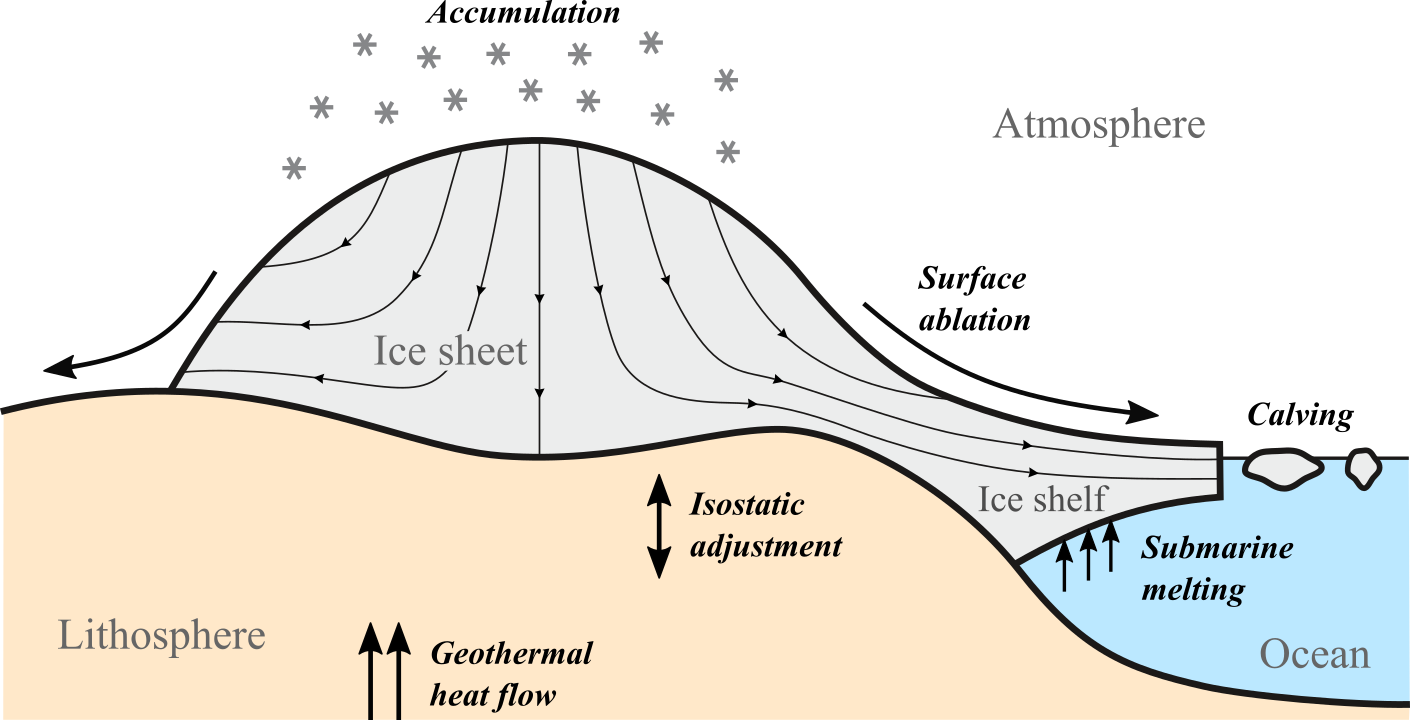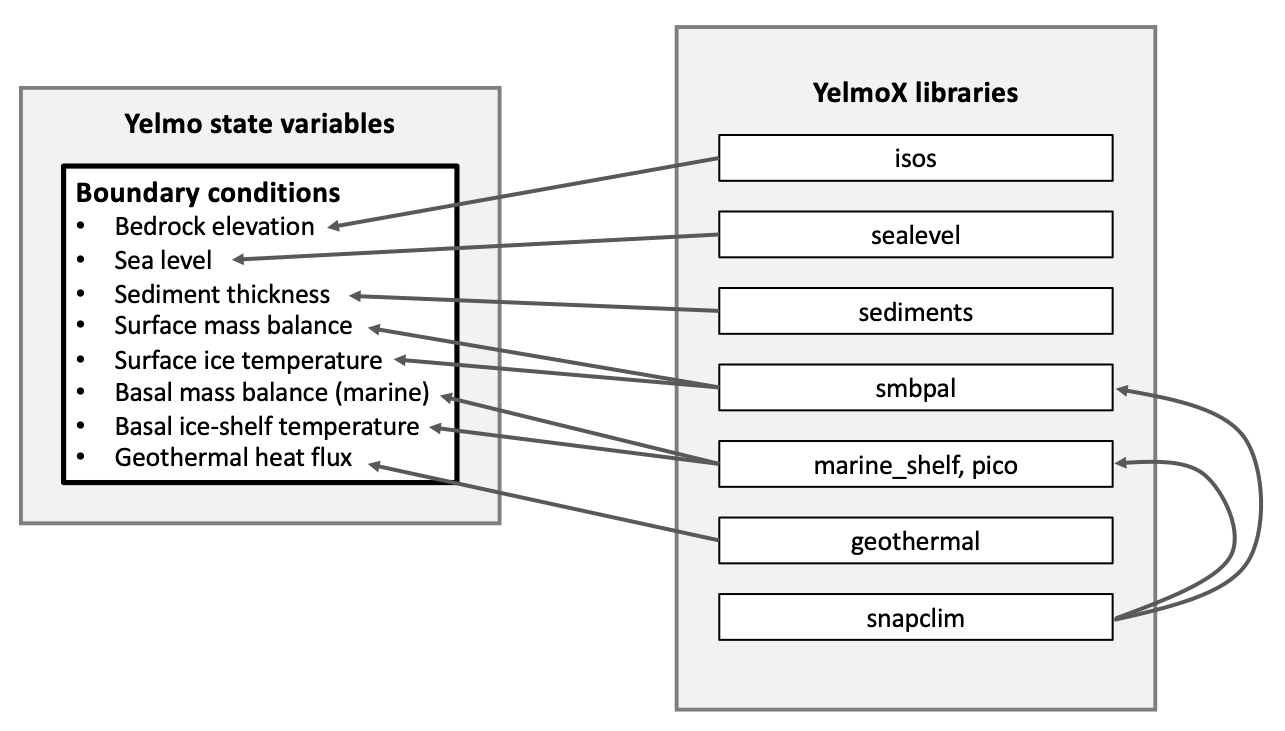Running with YelmoX
YelmoX is a separate repository that is designed to provide supplementary libraries and programs that allow running ice-sheet simulations with realistic boundary (e.g., climate and ocean) forcing and interactions (e.g., isostatic rebound).


Here you can find the basic information and steps needed to get YelmoX running.
Super-quick start
A summary of commands to get started is given below. Make sure all Dependencies are installed and that you follow the HPC notes!
Also note, below it is assumed that you are setting up on the pik_hpc2024 system. If not, make sure to specify the config file for your own system, as well as the locations of ice_data and isostasy_data (see HPC notes).
# yelmox
git clone git@github.com:palma-ice/yelmox.git
cd yelmox
python3 config.py config/pik_hpc2024_ifx
# yelmo
git clone git@github.com:palma-ice/yelmo.git
cd yelmo
python3 config.py config/pik_hpc2024_ifx
ln -s $FESMUSRC ./
cd ..
# FastIsostasy
git clone git@github.com:palma-ice/FastIsostasy.git
cd FastIsostasy
python3 config.py config/pik_hpc2024_ifx
ln -s $FESMUSRC ./
cd ..
# coordinates
git clone git@github.com:cxesmc/coordinates.git
cd coordinates
COORDSRC=$PWD
python3 config.py config/pik_hpc2024_ifx
cd ..
# REMBOv1
git clone git@github.com:alex-robinson/rembo1.git
cd rembo1
python3 config.py config/pik_hpc2024_ifx
ln -s $FESMUSRC ./
ln -s $COORDSRC ./libs/
cd ..
# Now, compile the default program
make clean
make yelmox
# Link to `ice_data` and `isostasy_data` repositories wherever you have them saved on your system
datapath=/p/projects/megarun
ln -s $datapath/ice_data
ln -s $datapath/isostasy_data
# Copy the runme config file to the main directory and modify for your system
cp .runme/runme_config .runme_config
# Run a test simulation of Antarctica for 1000 yrs
./runme -r -e yelmox -n par/yelmo_Antarctica.nml -o output/ant-test -p ctrl.time_end=1e3
That's it!